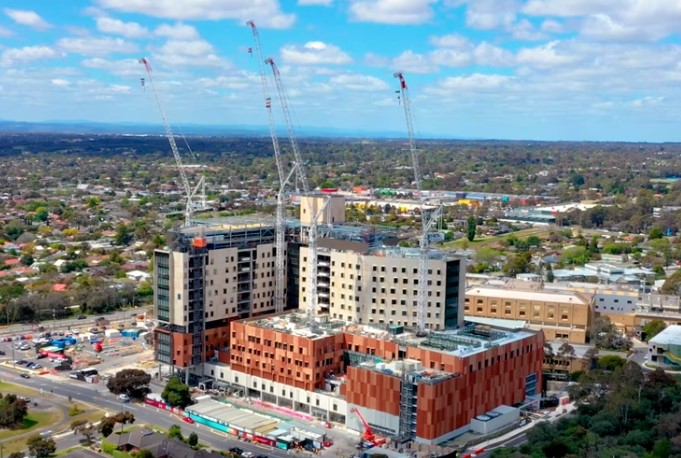15
Jul 2025
Healing Country, Healing People: Artworks for Frankston Hospital’s Transformation
Published in General on July 15, 2025

As part of the $1.1 billion redevelopment of Frankston Hospital, commissioned works by four Australian artists—Richard Briggs, Dan Elborne, Jody Rallah, and Hannah Quinlivan—are being integrated into the design under the theme “Healing Country, Healing People.” Drawing from the natural ecosystems and Indigenous heritage of Frankston and the Mornington Peninsula, their creations aim to foster calm, cultural connection, and wellbeing in the new healthcare environment.
Artists & Their Artistic Visions
- Richard Briggs will craft Flourishing Forest, a sweeping line drawing that captures the kelp forests of Port Phillip Bay—vital underwater ecosystems that support marine life. His work reflects both ecological restoration and community resilience.
- Dan Elborne is designing The Pillar, a 3.6‑metre sculpture positioned at the hospital entrance. Made with community‑shaped ceramic tiles and local materials—such as sand from Carrum—this piece symbolises connection to the Boonwurrung/Bunurong land and marks the threshold between community and care.
- Jody Rallah (Yuggera‑Yugggerabul/Biri‑Bindal) will create The Yarning Circle, a metallic inlay embedded in the paving of the Arrivals Garden. Inspired by the life cycle and migration of short‑finned eels in Kananook Creek, it expresses themes of resilience and transformation at a space designated for First Nations smoking ceremonies.
- Hannah Quinlivan’s Whispers of the Wetland combines a mural and sculptural elements reflecting the waterways of the Carrum Carrum wetlands. Located in the reception area, it aims to greet visitors with a visual invitation to consider the connection between Health and Country.
Art Meets Architecture
These pieces will be among the first elements experienced by visitors, arriving alongside Frankston’s new entrance and clinical tower, and are scheduled for unveiling as the redevelopment nears completion by the end of 2025. The expanded hospital will include a 12‑storey clinical tower, 130 new beds, fifteen operating theatres, upgraded emergency, maternity, oncology, and paediatric units.
Community Participation & Cultural Significance
Briggs and Elborne are hosting community clay‑shaping workshops, inviting local residents to contribute to The Pillar’s mosaic tiles and share stories reflecting on local landscapes, particularly kelp forest restoration efforts. These initiatives underscore the project’s ethos: healing Country, and by extension, healing the community.
Integration & Purpose
The artworks serve not only as visual enhancements but also as cultural anchors—bridging traditional ecological knowledge with spaces of clinical care. This approach helps foster a sense of place, belonging, and emotional comfort from the moment someone enters the hospital grounds. For patients and families who travel from regional areas, this welcoming environment—combined with access to appropriate hospital accommodation—can make a significant difference in how care is experienced and sustained across longer stays.
Broader Context: A Transformative Redevelopment
Backed by the Victorian Health Building Authority and delivered via a public–private partnership led by Exemplar Health, the hospital transformation spans design, construction, and 25-year operations. The project promises to treat up to 35,000 additional patients annually, help reduce waiting times, and generate new jobs and local economic activity. Importantly, investments in patient-centric amenities—including comfortable hospital stay facilities for long-distance and vulnerable patients—form part of a broader strategy to support not just clinical outcomes, but holistic wellbeing throughout the care journey.









